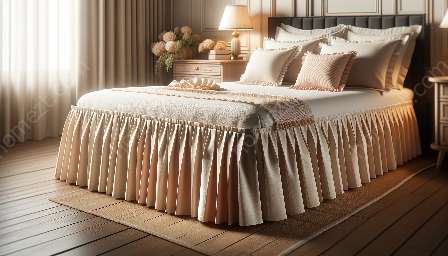Bedding is more than just a functional item; it can significantly impact the quality of your sleep and overall comfort. When it comes to selecting the right bedding for your home, considering the climate is paramount. Different climates require different materials and designs to ensure a comfortable and restful night’s sleep.
Understanding Different Climates
Before delving into the specifics of bedding, it’s important to understand the different climates and how they can affect your sleep. Climates can broadly be categorized into hot, cold, and temperate. Each climate presents its unique challenges when it comes to creating the ideal sleeping environment.
Hot Climates
In hot climates, breathability and moisture-wicking properties are crucial. Lightweight, natural materials like cotton, linen, and bamboo are ideal choices as they allow for greater airflow and prevent excessive heat retention. Look for bedding with a high thread count to ensure durability while maintaining breathability.
Cold Climates
For cold climates, insulation and warmth are key considerations. Opt for bedding made from materials like flannel, fleece, or high-quality microfiber. These materials trap body heat, keeping you warm and cozy throughout the night. Additionally, consider layering your bedding with a duvet or comforter for added warmth.
Temperate Climates
Temperate climates offer a balance of hot and cold temperatures, so versatility is essential. A combination of breathable and insulating materials, such as cotton and high-quality microfiber, can be an excellent choice. Choosing bedding with adjustable features, like a lightweight coverlet that can be paired with an additional blanket as needed, allows for adaptability in changing weather conditions.
Bedding and Linens
When it comes to bedding and linens, the choice of material and construction significantly influences comfort and durability. Take into account the following factors when selecting bedding for different climates:
- Material: Opt for natural fibers like cotton, linen, and bamboo for hot climates, and consider flannel and fleece for cold climates.
- Thread Count: A higher thread count typically indicates softer and more durable bedding. Look for a thread count between 200 and 400 for optimal comfort.
- Breathability: Ensure that the bedding allows for airflow to prevent overheating, especially in hot climates.
- Moisture-Wicking: In hot climates, moisture-wicking properties help keep you dry and comfortable throughout the night.
- Insulation: Cold climates require bedding with excellent insulation properties to retain body heat.
- Layering: Consider using layers that can be added or removed to accommodate changing temperatures.
Home Furnishings
Matching your bedding to the overall aesthetic and decor of your bedroom is essential for creating a cohesive and inviting space. Consider the following tips when choosing bedding that complements your home furnishings:
- Color and Pattern: Select bedding that coordinates with the color scheme and design of your bedroom. Neutral tones offer versatility, while patterns can add visual interest.
- Texture: Incorporate varying textures, such as smooth cotton or plush fleece, to add dimension to your bedding and create a tactile experience.
- Accent Pillows and Throws: Enhance the look of your bedding with decorative pillows and throws that complement your home furnishings, adding a personalized touch to your bedroom.
By considering the climate, material, and design of your bedding, as well as its compatibility with your home furnishings, you can create a comfortable and inviting bedroom retreat. Whether you’re preparing for a hot, cold, or temperate climate, selecting the right bedding ensures that you get a restful night’s sleep, year-round.























